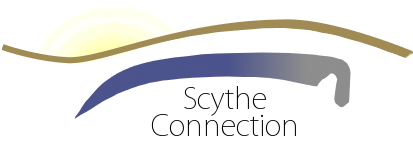 | |
|
|
Your question is logical; you are obviously considering the physics of it all. And perhaps many of the designers of the traditional snaths thought along the same lines. Were they "wrong"? Who is to say? But we all know that many traditional tools could have been designed better.
You also already know (by reading my take on the issue) that I would not want to use those heavy-nosed snaths. Not now, since I've stumbled upon what I consider a better design. And I do mean stumbled -- because I did not approach the matter as an engineer, but as a farmer guided by 'feel' rather than an understanding of physics. (I had once described the 'story' of how it happened, but perhaps it did not quite make it into electronic form...)
I presently can't take time for a long discussion on this topic, so let me get away with just jotting down a few points:
1. Of all snath designs, the one which mostly benefits from some counterbalance for the weight of the blade, is the one with two grips pointing towards the mower. In addition, with the style of movement I advocate, the "light-at-the-bottom" unit will be most appreciated. By "light-at the bottom" I mean that a snath without the blade will more or less hang/lay horizontally if suspended upon a finger from the lower grip. Once the blade is mounted the unit will, of course, be heavier at the bottom.
2. The downward pressure upon a blade during its cutting stroke is a good (sometimes even necessary) technique under many (though not all) conditions. I did not "invent" the idea, but yes, I was probably the first to present it in print -- at least in the English language. However, if you wanted to make a snath whose bottom end weight would "automatically" fulfill the function of the downward pressure, you'd end up with an awfully heavy and awkward tool overall. Keep in mind that at least half the time the scythe is used, it is not actually cutting (the backstroke already represents a half...) During all that time, a unit that feels like a well-balanced 'feather' in your hands is a pleasure to use, period.
3. I should also note here that for the single-grip snaths (which are held mostly at a more upright angle), there is NO advantage to have the upper end heavier; in fact it would be counterproductive (I've tried this as well).
To sum up:
Try your physics in the field; if you come up with anything revelatory, please get back to us.
With best regards,
Peter

